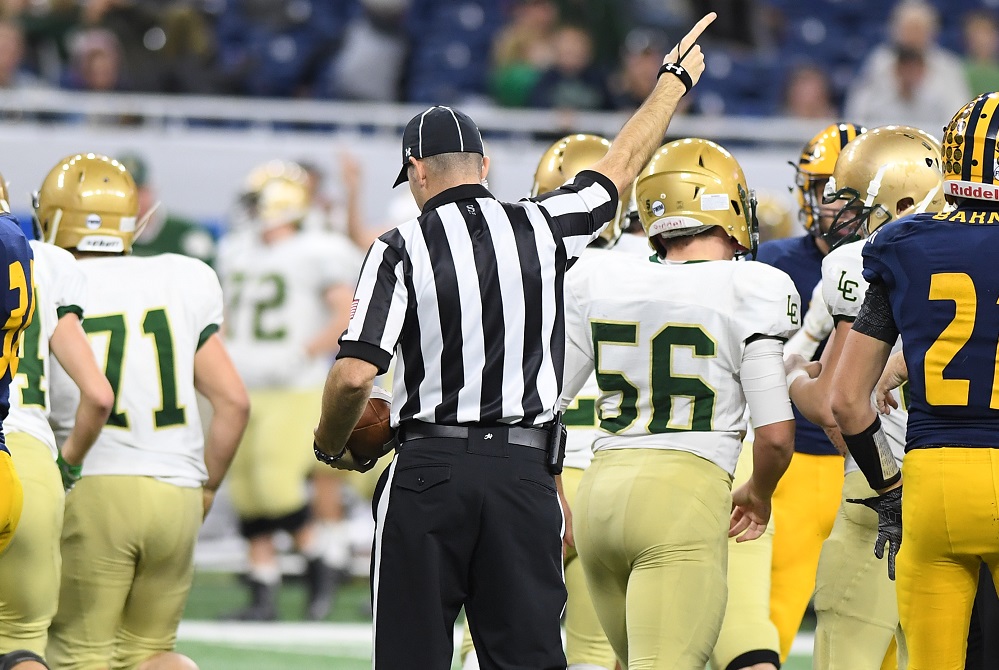
Be the Referee: Pass Interference
By
Geoff Kimmerly
MHSAA.com senior editor
September 2, 2021
This week, MHSAA officials coordinator Sam Davis explains the differences in high school pass interference rules from those at the college and pro levels.
Be The Referee is a series of short messages designed to help educate people on the rules of different sports, to help them better understand the art of officiating, and to recruit officials.
Below is this week's segment – Pass Interference – Listen
One of the big differences between high school football and the college or pro game is how pass interference is called.
In high school, there is no such thing as an “uncatchable” pass. If there is illegal contact by the defender while the ball is in the air, that’s pass interference, no matter where the pass ultimately ends up.
Also – in high school – a defender can “face guard” as long as no contact is made with the receiver. That is not pass interference, even if the defender does not look back for the ball.
Both of those interpretations differ from the college and pro game. Both (of those) levels have an uncatchable exception, and neither allows for face guarding.
Keep that in mind the next time you think you’ve spotted pass interference at the high school level.
Previous editions
Aug. 26: Protocols and Mechanics – Listen

Be the Referee: Volleyball Jewelry
By
Paige Winne
MHSAA Marketing & Social Media Coordinator
September 6, 2023
Be The Referee is a series of short messages designed to help educate people on the rules of different sports, to help them better understand the art of officiating, and to recruit officials.
Below is this week's segment – Volleyball Jewelry - Listen
There’s a new rule in volleyball regarding the wearing of jewelry.
Previously, participants were not allowed to wear stud or post-like jewelry, such as earrings, even if they were covered by tape.
But now, stud or post-like jewelry, worn above the chin, is allowed. Stud earrings are now allowed to be worn during play – and do not need to be covered by tape.
Hoop-style jewelry, such as hoop earrings, are still not allowed, even if covered by tape. If a player is wearing hoop earrings, the coach will be issued an administrative yellow card for the first offense and a red card for a second offense in that set.
Items such as a medical-alert medal or a religious medal must be taped to the body and can be visible during play.
Previous Editions
Aug. 30: Football Rules Similarities - Listen
Aug. 23: Football Rules Differences - Listen

